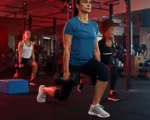Exercise is one of the most effective ways to improve your physical and mental health. Whether you’re a seasoned athlete, a passionate fitness enthusiast, or someone new to exercise, staying active has numerous benefits. But as rewarding as it is, exercise can sometimes lead to injuries such as sprains, strains, or even fractures if proper precautions aren’t taken.
Thankfully, most exercise-related injuries are preventable with the right approach. This guide will explore common exercise injuries and provide actionable steps to reduce your risk.
Common Exercise Injuries Explained
1. Sprains
A sprain occurs when ligaments (the tissue connecting bones) are overstretched or torn, often in joints like the ankle or wrist. Sprains typically result from sudden forces like twisting or impact during sports or high-intensity activities.
2. Strains
Strains involve overstretching or tearing muscles or tendons. They are often caused by improper form, lifting heavy weights, or overusing specific muscles. Common areas for strains include the back, hamstrings, and shoulders.
3. Fractures
Fractures (broken bones) can result from high-impact accidents, excessive stress on a bone, or improper technique during activities that involve repetitive impact, such as running.
Now that we’ve outlined some common injuries, let’s focus on how you can prevent them.
7 Tips to Prevent Exercise Injuries
1. Consult a Professional Before Starting
Before starting a new exercise program, check in with a professional to assess your readiness. Your doctor can evaluate your overall health, suggest adjustments to your fitness plan, and address any past injuries.
Consider working with skilled professionals, such as physical therapists, athletic trainers, or certified personal trainers. They can help evaluate your posture, recommend fixes to your form, and create an appropriate exercise routine designed to meet your goals safely.
2. Focus on Proper Movement Patterns
The leading cause of injuries like strains and sprains is poor form repeated over time. Whether you’re lifting weights, running, or playing a sport, bad movement mechanics stress joints, muscles, and ligaments.
For example, if you’re a runner, assess your stride. Are you landing too hard on your heels or leaning excessively forward? If you participate in a repetitive activity like rowing or throwing a ball, do your movements create imbalances that might predispose certain areas of your body to injury?
To correct your form:
- Research proper techniques for your chosen activities.
- Record yourself during exercise, or invite a coach to evaluate your movement patterns.
- Invest time in cross-training to reduce over-reliance on a single set of motions.
3. Ease Into Fitness Goals
Setting realistic goals is essential, especially if you are new to exercise or returning after a break. Ramping up intensity or duration too quickly increases your risk of injury from overexertion or improper conditioning.
For example:
- If you’re preparing for a long run but have never run more than three miles, plan to gradually increase your mileage week by week.
- If you’re new to a sport like basketball or pickleball, keep your sessions short and focus on learning the fundamentals rather than jumping straight into competitive games.
Patience is key. Building up strength and endurance safely takes time.
4. Always Warm Up and Cool Down
Jumping straight into high-intensity exercise increases your risk of sprains or strains because your muscles and joints may not be ready to handle the activity. Start your workout with 5 to 10 minutes of light aerobic activity, such as cycling or jogging, followed by dynamic stretches like arm swings, skips, or lunges.
Similarly, after your workout, include a cool-down session with gentle stretching to allow your muscles to return to their resting state and prevent stiffness.
5. Strengthen Your Core
Your core muscles (abs, obliques, and lower back) act as the foundation for almost every type of physical movement. A weak core forces other parts of your body, such as your shoulders or hips, to overcompensate, increasing the chances of strain or injury.
Two highly effective core-strengthening exercises include:
- Plank: Hold your body in a straight push-up position, engaging your abs to maintain stability for 30 seconds or longer.
- Side Plank: Rotate into a side-facing plank position to target your obliques, making sure your body stays aligned like a straight board.
6. Cross-Train to Prevent Overuse Injuries
Doing the same exercise every day puts repetitive stress on the same muscles, tendons, and joints, which can lead to overuse injuries. For example, runners may overwork their knees or ankles, while tennis players often strain their elbows.
Cross-training allows your body to recover while still staying active. For example:
- Runners can swim or cycle to improve cardiovascular fitness with less impact.
- Lifters can incorporate yoga or pilates to build flexibility.
- Throwing athletes can reduce stress by alternating with lower-impact strength training.
7. Prioritize Rest and Recovery
Intense exercise creates tiny tears in your muscles, and rest is when they heal and grow stronger. Overtraining without adequate recovery not only raises your risk of injury but can also hinder your progress.
To support recovery:
- Schedule rest days or engage in low-impact activities like walking or swimming.
- Focus on high-quality sleep to allow your body to repair itself.
- Stay hydrated and fuel your recovery with a balanced diet rich in protein, vitamins, and minerals.
Why Prevention Matters
Preventing injuries isn’t just about avoiding short-term pain; it’s also key to achieving long-term fitness goals. An injury can set back your progress for weeks or months and potentially lead to chronic issues if not addressed properly.
By taking a proactive approach to injury prevention, you can enjoy all the benefits of exercise while minimizing setbacks.
Final Thoughts
Whether you’re just beginning your fitness journey, training for a competition, or working out for fun, preventing injuries should always be a priority. Work with professionals, practice proper technique, ease into intense routines, and give your body the rest it needs to thrive.
Your health and safety are worth the extra time and effort. Start incorporating these tips into your fitness plan today and keep moving toward your goals!








